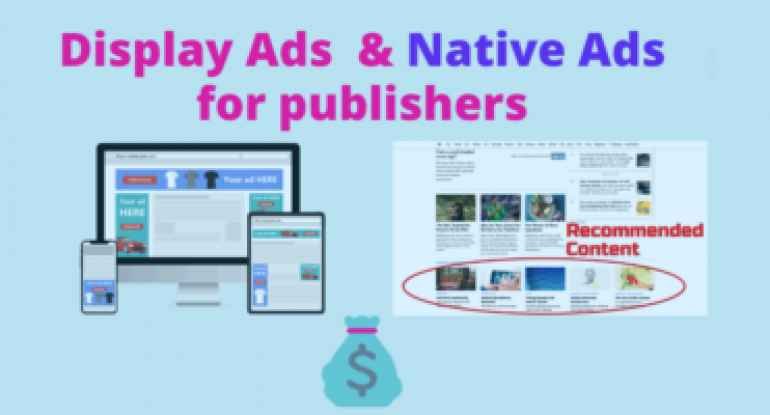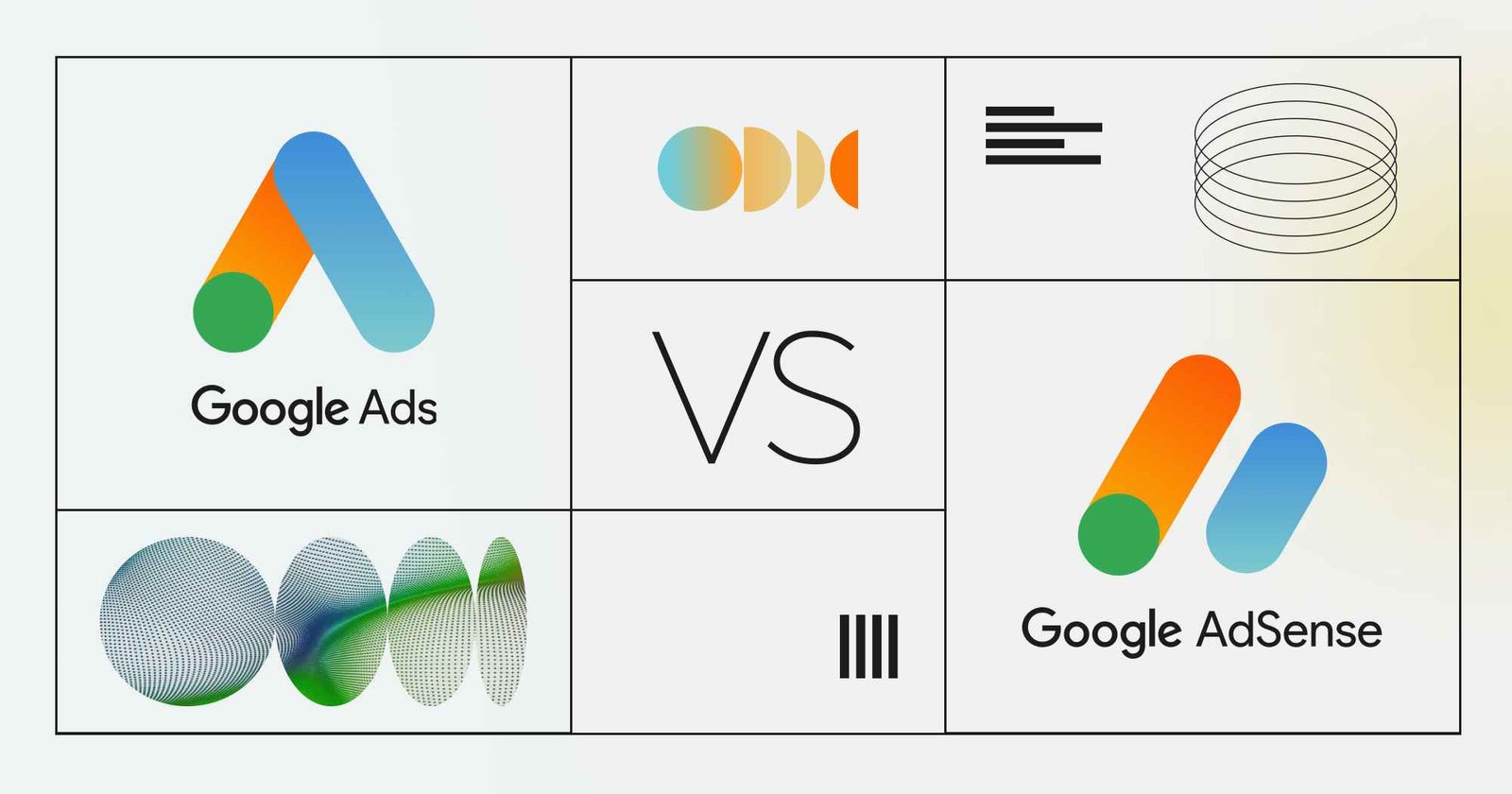In today’s digital world, monetizing a website or blog has become essential for many content creators. With so many options available, it can be difficult to decide which method is the most effective for increasing revenue. Two popular options are Adsense and native advertising. Both have distinct advantages and disadvantages, and understanding them is crucial for maximizing revenue. In this comparison article, we will delve into the differences between Adsense and native advertising, providing expert insights and tips to help you make the best decision for your website or blog. So, whether you are a seasoned content creator or just starting out, read on to discover how you can increase your revenue with Adsense and native advertising.
Comparison Table: Adsense vs. Native Advertising
Adsense | Native Advertising | |
|---|---|---|
Definition | Google’s advertising network that places paid ads on websites and pays the website owner a percentage of the revenue. | An advertising method that mimics the look and feel of the website it’s placed on to make it feel like a natural part of the content. |
Pricing Model | Cost-Per-Click (CPC) or Cost-Per-Thousand Impressions (CPM) model. | Cost-Per-Click (CPC), Cost-Per-Engagement (CPE), or Cost-Per-View (CPV) model. |
Targeting Capabilities | Uses contextual, behavioral, and demographic targeting to show ads to the right audience at the right time. | Uses data-driven targeting to show ads to users based on their interests, location, and behavior. |
Ad Layout | Standard ad formats that are displayed on specific areas of the website. | Blends in with the website’s design and can be displayed as sponsored content, in-feed ads, or recommended content. |
Revenue Share | Pays the website owner a percentage of the revenue generated from clicks or impressions on the ads. | Offers a flat fee or revenue share to the publisher for displaying the sponsored content. |
Ad Blockers | Ads may be blocked by ad blockers, which can reduce revenue. | Since native ads blend in with the website’s content, they are less likely to be blocked by ad blockers. |
Effectiveness | Effective in generating revenue and increasing website traffic. | Effective in engaging users and driving conversions. |

Adsense vs. Native Advertising: Maximizing Revenue
Description
Adsense and Native Advertising are two popular ways to monetize websites. Adsense is a program run by Google that allows publishers to earn money by displaying ads on their website. On the other hand, native advertising refers to sponsored content that blends seamlessly into the user’s experience.
Pros and Cons
Adsense
- Pros: Easy to set up, high reach, diverse ad formats, reliable payment, and self-optimization.
- Cons: Low revenue per click, low-quality ads, high competition, and susceptibility to invalid clicks and fraud.
Native Advertising
- Pros: High engagement, non-intrusive, relevant to users, organic integration, and targeted audience.
- Cons: Expensive, limited ad formats, not suitable for all niches, dependence on trust and perception, and difficulty in measuring success.
Key Points
Adsense
- Key features: Auto ads, ad balance, AdSense for search, and responsive ads.
- Performance: Adsense pays a portion of the revenue earned by advertisers. The average revenue per page (RPM) is $2-$5; fluctuations depend on various factors like website niche, traffic, ad placement, and ad format.
Native Advertising
- Key features: Sponsored content, in-feed ads, recommended content, and promoted listings.
- Performance: Native ads tend to have higher engagement rates and click-through rates (CTR) than display ads. The average cost per click (CPC) for native ads is $0.30-$0.50; better performance counts on factors such as ad quality, relevance, and targeting.
Reasons to Consider/Ignored
Adsense
- Consider: High reach, diverse ad formats, easy setup, and ongoing self-optimization.
- Ignore: Low revenue per click, low-quality ads, high competition, and vulnerability to invalid clicks and fraud.
Native Advertising
- Consider: High engagement, non-intrusive, organic integration, targeted audience, and high potential ROI for particular niches.
- Ignore: Expensive, not suitable for all niches, limited ad formats, need trust and perception, and difficulty in measuring success.
Suggestions for Potential Buyers
Choosing between Adsense and Native Advertising depends on your website type and business goals. If you want to increase revenue quickly and have a broader audience, Adsense would be the right choice. But, if you are into content marketing and have a niche audience, Native Advertising can fetch better results in terms of engagement and brand awareness. Remember, both methods require testing and optimization to maximize revenue.

Guidelines for Using Adsense vs. Native Advertising: Maximizing Revenue
1. Understand the Difference
Adsense is a program that displays ads on your website and pays you based on clicks or impressions. Native advertising is a form of paid content that is created to blend in with your website’s content. It is designed to look like editorial content and can be sponsored by a company or advertiser.
2. Place Ads Strategically
When using Adsense, place ads in areas where users are most likely to click, such as above the fold or within content. With native advertising, integrate the content seamlessly into your website so that it does not disrupt the user’s experience. Avoid creating content that is too promotional or salesy.
3. Choose the Right Ad Types
Adsense offers a variety of ad types, including display ads, text ads, and link units. Experiment with different ad types to see what generates the most revenue. With native advertising, choose a format that fits your website’s style and topics. For example, if your website is about food, consider sponsored recipes or cooking videos.
How To Maximize Revenue with Adsense vs. Native Advertising
1. How to choose between Adsense vs. Native Advertising?
Answer: Choosing between Adsense and Native Advertising depends on your website’s niche, audience, and monetization goals. If you want to display relevant ads and generate passive income, Adsense is a good option. However, if you have a specific target market and want to improve engagement and conversions, Native Advertising can be more effective. Conduct market research, review case studies, and experiment with both options to determine the best fit for your website.
2. How to set up Adsense on your website?
Answer: To set up Adsense on your website, follow these steps:
- Sign up for a Google Adsense account.
- Create ad units according to your website’s size and format requirements.
- Copy and paste the ad code into your website’s HTML or CMS editor.
- Wait for Google to review and approve your website.
- Start earning revenue from Adsense ads displayed on your website.
3. How to make your Native Advertising campaigns successful?
Answer: To make your Native Advertising campaigns successful, consider the following tips:
- Research your target audience preferences and interests.
- Create engaging and relevant content that aligns with your brand message.
- Use enticing headlines, visual elements, and CTAs to capture attention and encourage click-throughs.
- Select reliable Native Advertising platforms with high-quality publishers and advanced targeting options.
- Analyze your campaign data regularly and adjust your strategy accordingly to improve performance.
4. How to monetize your mobile app with Adsense or Native Advertising?
Answer: To monetize your mobile app with Adsense, you need to:
- Create a mobile-responsive website and integrate Adsense ad units.
- Add the Adsense code to your app’s ad SDK or third-party mediation platform.
- Configure the ad placement, format, and targeting settings to optimize revenue and user experience.
- Track your app’s earnings and performance through the Google Analytics and Admob tools.
To monetize your mobile app with Native Advertising, you need to:
- Select a Native Advertising provider with mobile SDK integration and care about mobile user experience.
- Create a theme and layout that suits the mobile app.
- Use a demand-side platform (DSP) to find suitable advertisers and fill your ad inventory.
- Optimize your ads’ display frequency, format, and placement based on user feedback and ad performance metrics.
5. How to measure the success of Adsense vs. Native Advertising?
Answer: To measure the success of Adsense, you can track the following metrics:
- Impressions – the number of times an ad is displayed on your website.
- Clicks – the number of times a user has clicked on an ad.
- CTR – the click-through rate, calculated as clicks/impressions * 100% to measure the ad’s effectiveness
- CPC – the cost per click paid by advertisers to Google, which determines your revenue share.
- RPM – the revenue per thousand impressions, calculated as revenue/impressions * 1000 to evaluate your website’s revenue potential.
To measure the success of Native Advertising, you can track the following metrics:
- Engagement – the duration and depth of the users’ interaction with your native ads.
- Conversion – the rate of the users’ response to your native ads, such as downloading an app, subscribing to a newsletter, or making a purchase.
- ROI – the return on investment, calculated as revenue/cost * 100% to evaluate the profitability of your native advertising campaigns.
- Brand lift – the awareness or perception improvement of your brand message and identity among your target audience.
Frequently Asked Questions for Adsense vs. Native Advertising: Maximizing Revenue
1. What is the difference between Adsense and native advertising?
Adsense is a form of display advertising, where ads are placed on a website by Google and the website owner receives revenue for every click on the ad. Native advertising, on the other hand, is sponsored content that blends in with the website’s content and is designed to feel like part of the site’s experience.
2. Which one is better for maximizing revenue?
Both Adsense and native advertising can be effective for maximizing revenue, but it depends on the website and its audience. Generally, Adsense is better for high-traffic websites that have a broad audience, while native advertising can be more effective for niche sites with a smaller but engaged audience.
3. Are there any drawbacks to using Adsense?
One potential drawback of Adsense is that the ads may not be relevant to the website’s content or audience, which can lead to lower click-through rates and revenue. Additionally, Google can sometimes be strict about its policies and may suspend or ban a website’s Adsense account if it violates its terms of service.
4. Is native advertising more expensive than using Adsense?
Native advertising can be more expensive than using Adsense, as it involves paying for sponsored content. However, it can also generate higher engagement and conversions, which can make up for the cost in the long run.
5. Can a website use both Adsense and native advertising?
Yes, a website can use both Adsense and native advertising. However, it’s important to make sure that the ads blend in with the site’s content and don’t disrupt the user experience. It’s also important to abide by Google’s policies and ensure that the website is transparent about sponsored content.
In conclusion, we have delved into the differences between Adsense and native advertising and how they can maximize revenue for publishers. We have seen that Adsense can bring reliable revenue, but native advertising offers more flexibility in terms of customization and relevance to your audience. It is important to note that both forms of advertising have their benefits and it ultimately depends on your goals and preferences as a publisher.
Based on our analysis, we recommend that you do not solely rely on Adsense or native advertising but rather utilize both forms to diversify your revenue streams. It is also crucial to continuously measure and analyze the performance of your ads to ensure that they are effectively reaching your target audience and generating optimal revenue. With this approach, you can maximize your revenue potential and maintain a steady stream of income.